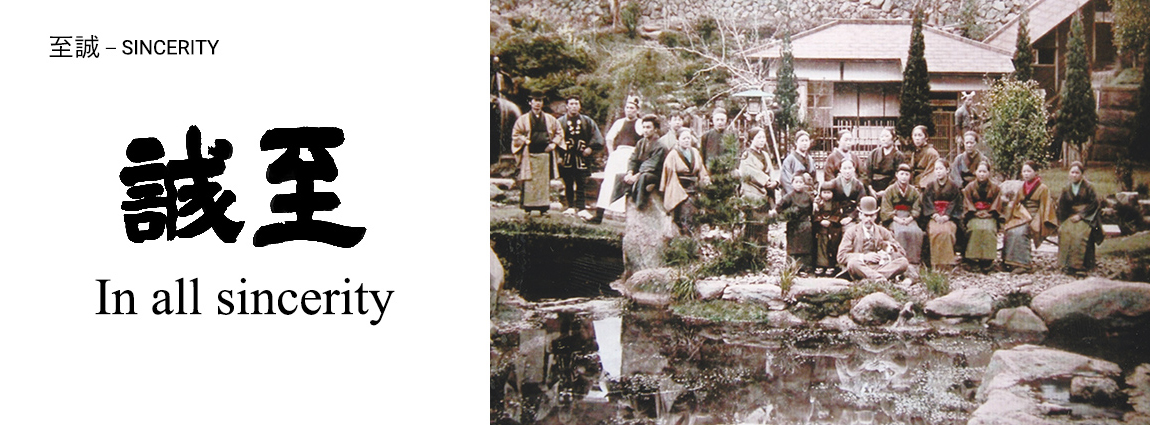
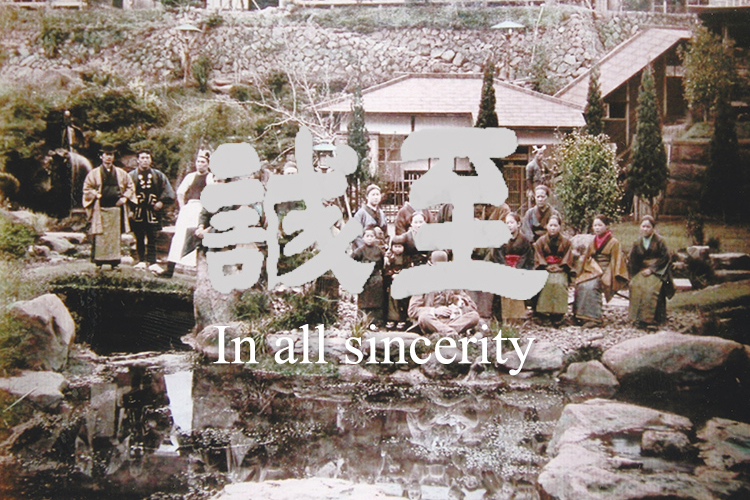
Utmost honesty in all that we do
For a little over 140 years since its establishment in 1878, Fujiya Hotel’s buildings, facilities, and services have continued to change in step with the times, but there is one thing that has remained constant all this time. That is, the Japanese mindset, or the spirit of hospitality. This spirit endures at Fujiya Hotel today through our company credo of “sincerity.” In other words, “utmost honesty and devotion.” One could say that this sincerity is the crystallization of the Japanese mentality and the reason why Fujiya Hotel, together with the natural beauty of the Fuji-Hakone region, has continued to captivate people over the years. It is also the crystallization of dreams befitting of a hotel bearing the name “Fuji”, a true symbol of Japan.
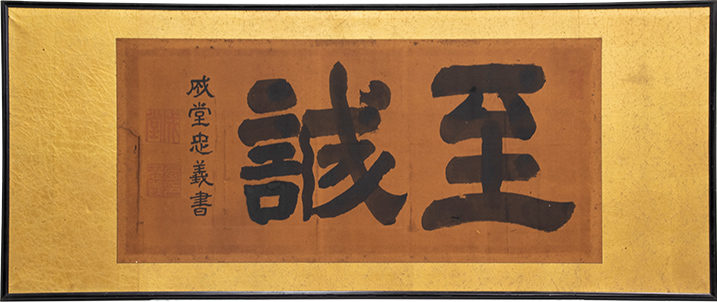

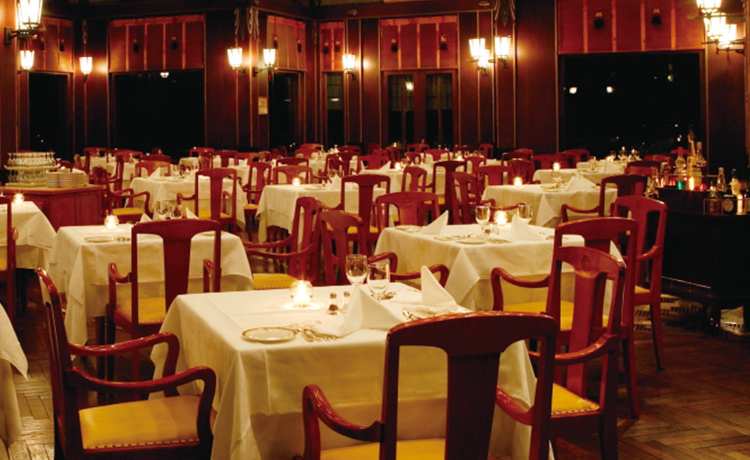
Nothing else says more about Fujiya Hotel
THE FUJIYA—the hotel’s main dining room—was completed in 1930. Constructed by the third president Shozo Yamaguchi as a place where one can best appreciate the uniqueness ofFujiya Hotel, this exceptional space continues to mesmerize many guests even today. It is here the hotel serves French cuisine passed down from generation to generation of master chefs. The ceiling displays 636 paintings of plants and the walls feature carvings of the Japanese zodiac and other animals representing human morals. It could be said that the spirit of Fujiya Hotel, as a reflection of awe towards nature in all its magnificence, is the very same spirit of the Japanese people.










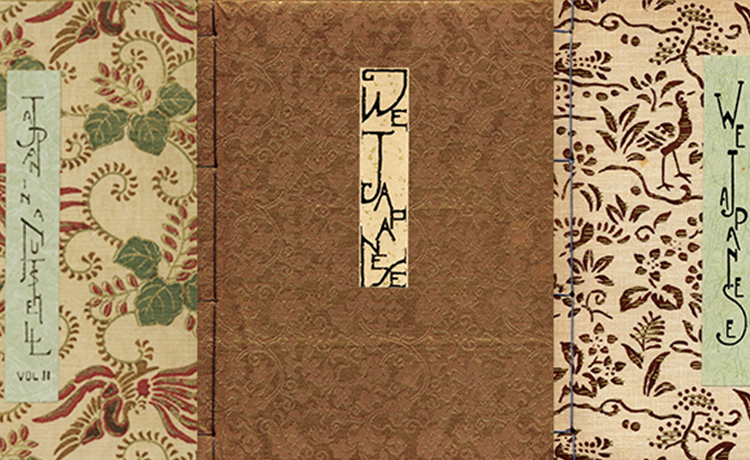
Visual guide to Japanese manners and customs
Beginning in around 1930, short sentences about Japanese culture, manners, customs, art, and other similar topics were printed on the back of the hotel’s restaurant menus. Having lived abroad for a considerable length of time, Shozo Yamaguchi knew that his international guests sought information in the form of interesting anecdotes unique to Japan. The menus—printed daily on card stock—certainly enlivened conversation at the dinner table. The episodes were penned by Professor Atsuharu Sakai of Aoyama Gakuin University and later published as the book titled We Japanese. They pretty much served as a useful guide to understanding the Japanese spirit on the basis of which Fujiya Hotel had strived to communicate with its foreign guests.
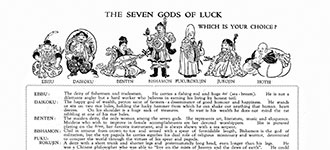
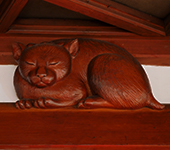
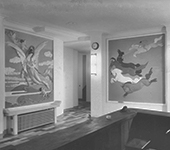

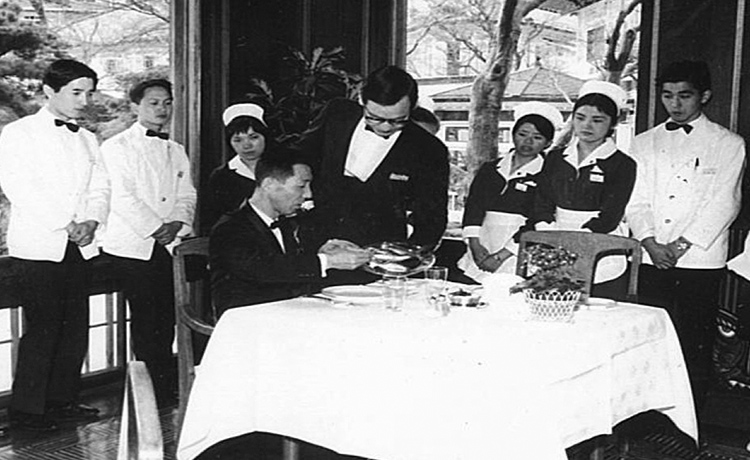
Breaking the mold
Around the time FLOWER PALACE was completed, Fujiya Hotel had become a hotel industry leader, so that inn owners sent their sons and daughters as trainee to there. Then in 1930 the hotel opened the Fujiya Training School to provide hotel service training by drawing on its know-how of rational management and hospitality. Many Japanese inns at the time simply operated as places for visitors to spend the night, but Shozo Yamaguchi wanted to see them provide cordial services and modern management. Records also indicate that Fujiya Hotel was the first hotel in Japan to adopt cost accounting practices.

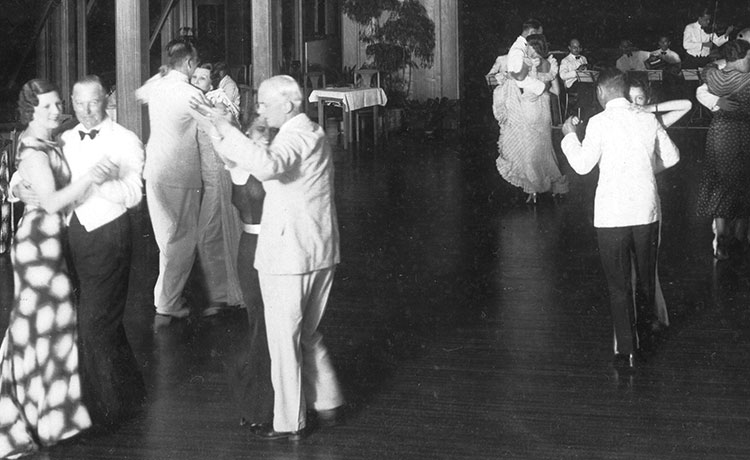
Mountain balls and other social events
Many recreational activities were organized for long-term guests at Fujiya Hotel. Afternoon tea in the front garden, movie screenings, billiards and games, and social balls in Cascade Room, just to name a few. These events provided times of amusement for guests, but also the chance for people from different countries staying at the same hotel to exchange information about culture and art. In this way, this Western-style hotel deep in the mountains of Hakone was not just a lodging facility—it also functioned as a place for social interaction in the traditional salon style.

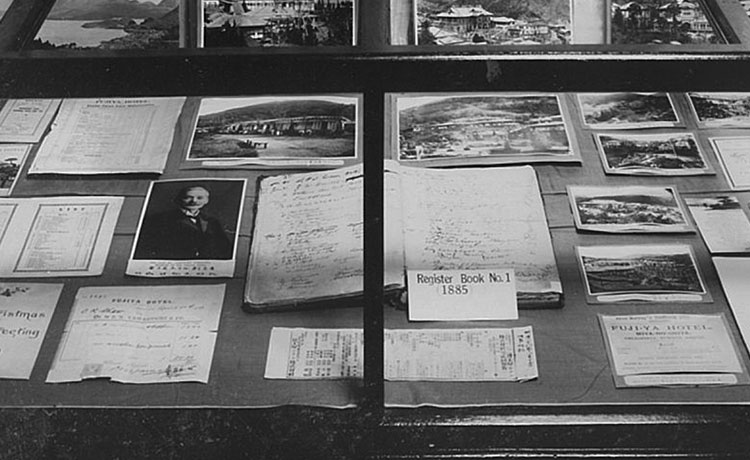
140 years of history
Display cabinets built into the walls of the so-called “RUE DE LA PAIX” and “PALACE-DORI” corridors of Fujiya Hotel were previously used to exhibit historical items. It is said that Shozo Yamaguchi used to take hotel guests up to SHOTENKAKU TOWER in DINING ROOM building and talk about the history of the hotel with the view from that vantage point. And the historical archives on the basement level of FLOWER PALACE have continued to pique the intellectual curiosity of people staying at the hotel. Following in the footsteps of our predecessors, we made every effort to expand the volume of archives on display as part of the recent major renovations.

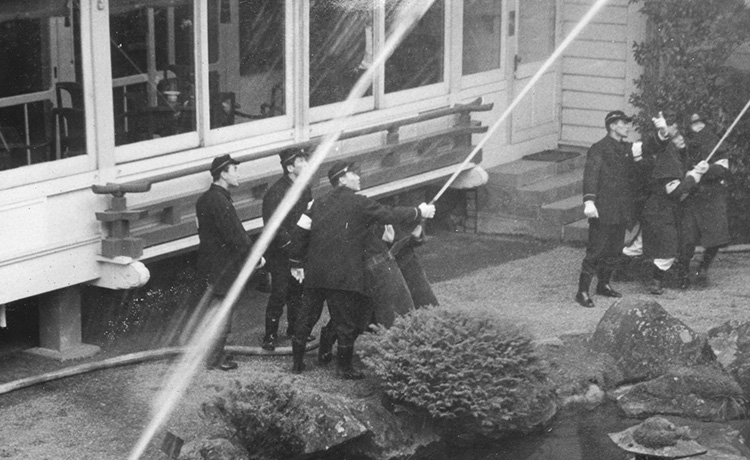
Keeping customers safe from fire or earthquakes
The original buildings of Fujiya Hotel were once lost in the Great Miyanoshita Fire. The hotel also experienced the Great Kanto Earthquake, but overcame the hard times thanks to all employees working together as a team. We have always paid special attention to our fire prevention systems, but it was the occupying forces during the hotel’s requisition after the World War II that brought about an increased level of awareness regarding fire-prevention and hygiene management. Moreover, the recent major renovation work has further improved earthquake and fire resistance throughout the buildings. We hope to continue to keep our customers safe and secure and safeguard the registered cultural assets of Fujiya Hotel.

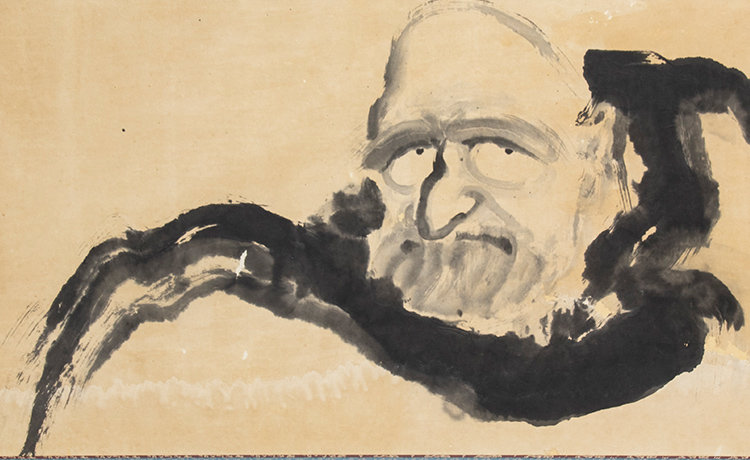
Fall down seven times, get up eight —never-give-up spirit
In 1923, Fujiya Hotel Company established Hakone Hotel Co. Ltd. and constructed the Hakone Hotel on the shores of Lake Ashi. Many had invested in the project and it appeared to be all smooth sailing from the outset. However, just one month after the hotel’s completion Hakone was rattled by the Great Kanto Earthquake. The Hakone Hotel was destroyed in an awful sight to see. It was then rebuilt only to suffer the same fate at the hands of the North Izu Earthquake in 1930. While in the depths of despair, Shozo Yamaguchi was sent a single ink painting from a friend. It was a picture of the Buddhist monk Bodhidharma expressing the never-give-up spirit. This picture, a source of support for Shozo his whole life, still hangs in Fujiya Hotel’s THE MAIN.